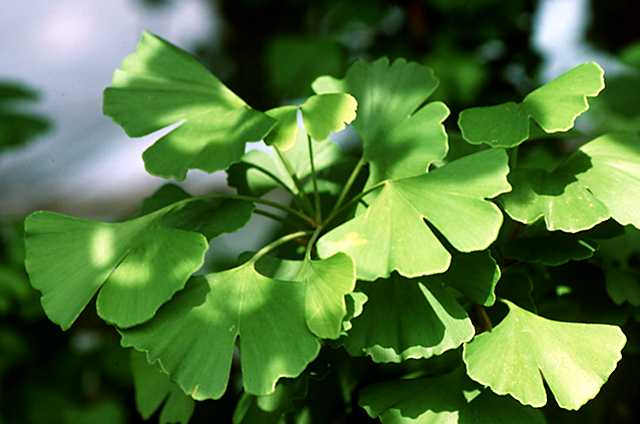
What plant may cure Alzheimer's disease, increase circulation, tastes like almonds and smells like rancid butter? This plant is none other than Ginkgo biloba. Ginkgo extracts have played a crucial role in Chinese herbal medicine for many centuries. Only recently has western medicine began to seriously study the medicinal uses of ginkgo. It is amazing that this plant might not even exist today had it not been for the Buddhist monks in Japan and China who cultivated it in their temple gardens and adopted it as a sacred tree.

The modern-day Ginkgo biloba has a very distinct appearance characterized by its fan-shaped leaves. In fact, the Japanese sometimes call this species I-cho, "tree with leaves like a duck's foot." It can grow up to 30 meters tall and can live for a millenium. It is also well-known for its unique seeds, which have long been used as a food source in Asia. The smell of a great mass of rotting seeds can also be overpowering. In the horticultural literature, it is variously referred to as "disagreeable," "evil," "offensive," "disgusting," "repulsive," and "abominable," and is often compared to the odor of vomit. It is due to the malodorous chemical compound butyric acid, whcih is found in the integument of the seed; it is the same compound that gives rancid butter its "distinctive" smell.
Ginkgo biloba is a highly adaptable plant that can grow in almost any temperate or Mediterranean climate. It is also resistant to pollution and pests. These attributes have made the male ginkgos very popular in cities.




The article from the Journal of the American Medical Association about Ginkgo biloba and Alzheimer's: [ full text, abstract ]
For general ginkgo information, including propogation, see Cor Kwant's Ginkgo Page.
Link to butyric acid information courtesy of the National Institute of Standards and Technology.

Sources:
Sun, G., 1993, Ginkgo Coriacea Florin from Lower Cretaceous of
Huolinhe, Northeastern Nei Monggol, China. Palaeontographica, Abt.
8, V. 230: 159-168.
Taylor, Thomas N. and Edith L., 1993, The Biology of Evolution of Fossil Plants, Prentice Hall, New Jersey, pp. 636-43.
Del Tredici, P., 1989, Ginkgos and multituberculates: evolutionary interactions in the Tertiary, Biosystems 21-22: 327-337.

